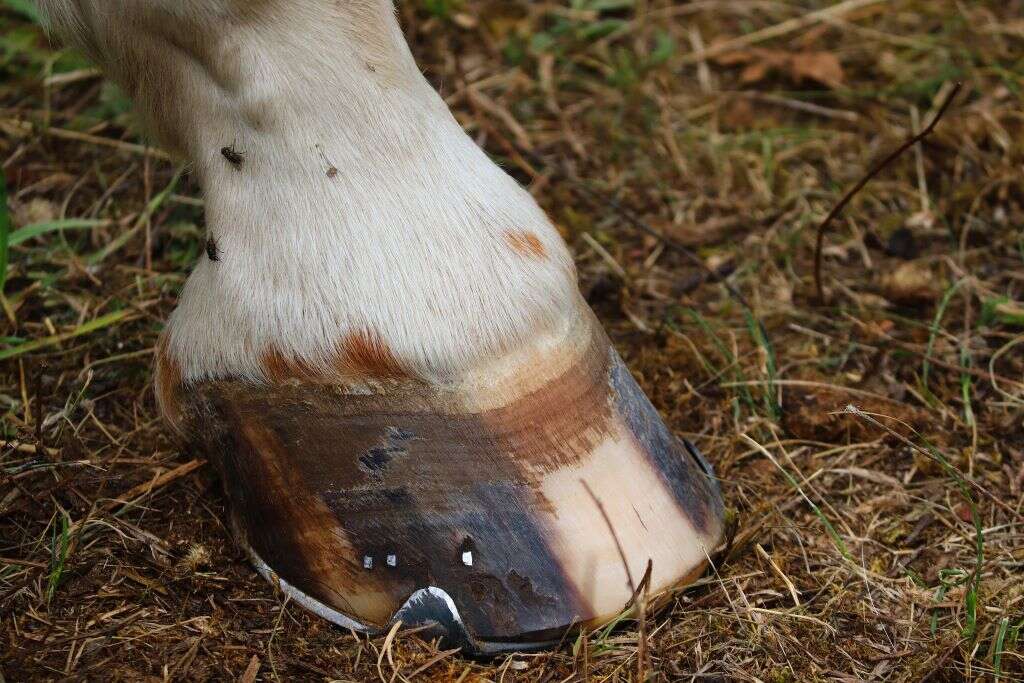10 Fungal Infection Symptoms
 Article Sources
Article Sources
- 1. 'Fungal Infections.' MedlinePlus, U.S. National Library of Medicine, 20 May 2021, medlineplus.gov/fungalinfections.html
- 2. 'Nail Fungus.' Mayo Clinic, www.mayoclinic.org/diseases-conditions/nail-fungus/symptoms-causes/syc-20353294
- 3. 'Kerion.' DermNet NZ, dermnetnz.org/topics/kerion
- 4. 'Majocchi Granuloma.' DermNet NZ, dermnetnz.org/topics/majocchi-granuloma
- 5. 'Tinea Incognita.' DermNet NZ, dermnetnz.org/topics/tinea-incognita
- 6. 'Skin Manifestations of Systemic Mycoses.' DermNet NZ, dermnetnz.org/topics/skin-manifestations-of-systemic-mycoses
Fungal infection symptoms vary depending on the area of the body affected. Rashes, scaly patches, blisters and inflammation are just a few of the external signs of fungal infections. The most well-known fungal conditions include athlete's foot, jock itch, candida and ringworm.
The broad spectrum of fungal infections, if caught early enough, can usually be resolved with topical treatment. Fungal infections that spread or become chronic might require antifungal medication, topical creams and lifestyle management. Individuals who think they may have a fungal infection should consult with a health care professional, as using the wrong ointments could lead to further spread of the infection.
Skin Changes
Itching and flaking skin that has an odor could be a sign of a fungal infection. Fungi breed in damp, warm environments and frequently target parts of the body that are typically covered. In between the toes is a common area for a fungal infection to breed, which can easily turn into athlete's foot.
Other fungal infections can present as a scaly rash or discolored patches on the body. Small, itchy blisters on the side of the palm and fingers are other signs of a fungal infection. These blisters might ooze a clear liquid and can be extremely itchy.
Candida Overgrowth
The human body is filled with fungi, one of which is the candida family. Candida lives within the gut and other areas of the body. However, when there's an overgrowth, it can cause an infection called candidiasis.
Oral thrush, digestive problems and vaginal candidiasis are just a few of the issues caused by candida overgrowth. A candida fungal overgrowth might be a result of excess antibiotics or having a recent medical device fitted.

Ringworm
Ringworm is a skin infection caused by a fungus. Contrary to its name, the infection is not caused by a worm. Its name is derived from the easily identifiable thread-like circle that resembles a worm.
Ringworm fungus, which is related to athlete's foot and jock itch, is highly contagious. It can be resolved with the right antifungal creams and medication. Some individuals with ringworm experience overlapping rings, severe itching and small red bumps.1‘Fungal Infections.’ MedlinePlus, U.S. National Library of Medicine, 20 May 2021, medlineplus.gov/fungalinfections.html
Thickened and Discolored Nails
Fungal nail infections can cause thickened, brittle and discolored nails. Because fungus requires damp, dark places to thrive, toenail infections tend to be more common than fingernail infections.
Nail fungus, also called onychomycosis, can affect all nails, whether on the toes or the fingers. If the infection is severe, it can remain dormant and recur. Misshapen nails, debris beneath the nail surface and a strange odor are also common symptoms of a fungal nail infection.2‘Nail Fungus.’ Mayo Clinic, www.mayoclinic.org/diseases-conditions/nail-fungus/symptoms-causes/syc-20353294

Jock Itch
Jock itch is a fiery red and itchy rash located between the thighs and in the groin area. This fungal infection is a skin condition that typically occurs in the body's skin folds and warm areas.
People most at risk for jock itch are those who are overweight and those who sweat profusely. This condition commonly affects male athletes, which is where it got its name. Jock itch is a superficial fungal skin infection and can be cured with over-the-counter medicines.
Kerion Abscess
An infected abscess on the scalp could be a fungal kerion. Its hallmark characteristics include a raised, thickened boil filled with pus that's warm to the touch.
A kerion can be caused by physical trauma to the head or a reaction to a dermatophyte fungus that requires keratin to grow.3‘Kerion.’ DermNet NZ, dermnetnz.org/topics/kerion The abscess is an inflammatory reaction and requires medical treatment. Certain antifungal shampoos can also help prevent mild cases of inflammation.

Majocchi’s Granuloma
A fungal infection of the hair follicles is called Majocchi's granuloma. It's a rare clinical variant of tinea corporis. Fungi makes its way into the shaft of the hair follicles and penetrates the skin, causing a scaly plaque with pustules, blisters and nodules.
Majocchi's granuloma is more common in adults than children and has several causes, including humid tropical climates, an underlying weak immune system, shaving and untreated infections.4‘Majocchi Granuloma.’ DermNet NZ, dermnetnz.org/topics/majocchi-granuloma
Tinea Barbae
Tinea barbae is an infection of the beard caused by a dermatophyte fungus. Known to affect facial hair, the condition typically appears in men. This fungus is found within equine and cattle hair and can be passed on to people who work with animals.
Identified by crusty sores, tiny pus-filled pimples and swollen red bumps, tinea barbae is an uncommon fungal condition. It's not contagious and can be managed with antifungal medications.

Tinea Incognito
Tinea incognito is a fungal skin infection that occurs when tinea has been incorrectly managed with topical steroids. Some people might self-diagnose their rash, which can cause a fungal infection to turn into tinea incognito.5‘Tinea Incognita.’ DermNet NZ, dermnetnz.org/topics/tinea-incognita
The clinical appearance of the original tinea infection alters as it extends across the skin, and it normally presents as small scaly lesions, blisters and cracking skin. As tinea incognito spreads, the lesions can become pigmented.
Systemic Mycosis
Mycoses are a group of fungal infections that infect the internal organs. Systemic mycosis is a serious condition that requires medical attention. The condition tends to affect those who have been exposed to radiation, drugs, chronic infections and chemicals.
Systemic mycoses can enter the bloodstream through the lungs, gut or sinuses.6‘Skin Manifestations of Systemic Mycoses.’ DermNet NZ, dermnetnz.org/topics/skin-manifestations-of-systemic-mycoses Immunocompromised individuals might be at risk of developing systemic mycosis. Clinical signs to watch for include fever, coughing and a general feeling of unwellness.










